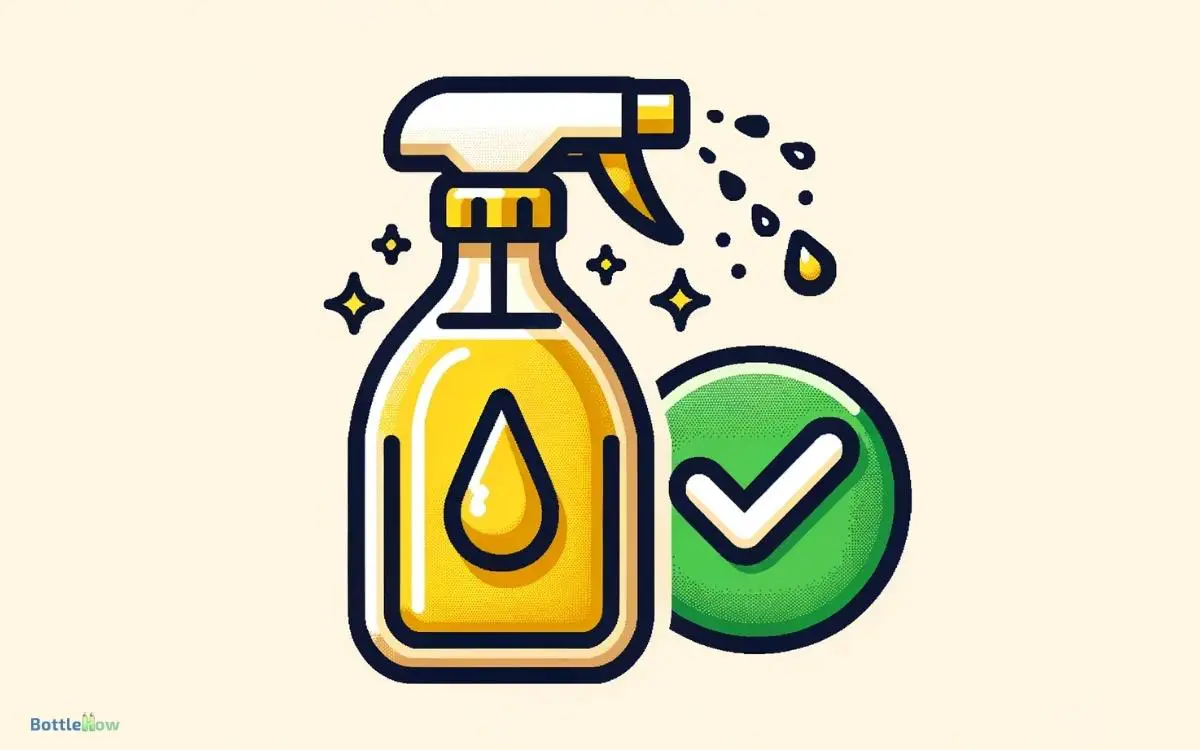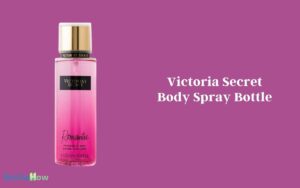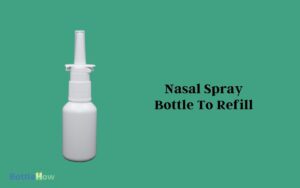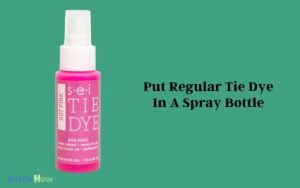Can You Put Oil in a Spray Bottle? Yes!
Yes, you can put oil in a spray bottle, but you must select the appropriate type of bottle and oil viscosity for best results. For oils with higher viscosity, opt for a trigger-operated spray bottle, which offers fine control and minimizes clogging.
Lower viscosity oils work well in pump-action bottles that build pressure for a finer mist. Always match the oil’s characteristics with the bottle’s design to guarantee efficient spraying and consistent oil distribution.
This method not only enhances uniform coating when cooking or baking but also supports healthier meal preparation by reducing oil use. There’s more to explore on optimizing your choice for different applications.

Key Takeaways
Understanding Different Spray Bottles
To effectively use oil in a spray bottle, you must first understand the various types of spray bottles available and their respective mechanisms. Spray bottles typically feature either a trigger-operated or pump-action mechanism.
A trigger-operated spray bottle uses a lever to activate a small pump that releases the fluid, offering fine control over the mist.
Conversely, a pump-action spray bottle requires you to press down on the top, building pressure that, when released, produces a mist. When selecting a spray bottle for oil, you’ll need to take into account the viscosity of the oil.
Thicker oils may require a more robust mechanism, such as a trigger-operated model, to ensure a consistent, manageable spray without clogging the nozzle.
Benefits of Using Oil Spray
- Enhanced Control Over Oil Distribution: Oil sprays provide precise control over the amount of oil distributed across cooking surfaces, helping to ensure consistency in food preparation.
- Reduced Oil Wastage: The spray mechanism allows for a finer application, minimizing the excess oil that often results from traditional pouring or brushing methods.
- Uniform Coating of Oil: Achieving a uniform layer of oil is essential for both cooking and baking, and oil sprays facilitate this by evenly covering surfaces.
- Healthier Meal Preparation: By reducing the amount of oil used, oil sprays contribute to lower fat consumption in meals, aligning with dietary recommendations for healthier eating.
- Cost-Effective in Commercial Settings: In environments like restaurants or healthcare facilities, using oil sprays can lead to significant savings in oil consumption, which can be economically beneficial.
- Improves Culinary Quality and Nutritional Outcomes: The ability to control oil usage more precisely not only improves the overall culinary quality of dishes but also enhances their nutritional profiles, which is crucial in service-oriented settings.
Choosing the Right Oil
When selecting the appropriate oil for your spray bottle, you must consider the types of oils that are suitable.
The viscosity of the oil affects the efficiency of the spray mechanism; thinner oils tend to spray more evenly and clog less.
Additionally, it’s important to adhere to health and safety guidelines to mitigate risks associated with inhalation and skin contact.
Types of Suitable Oils
Selecting the appropriate oil for your spray bottle often depends on its intended use, viscosity, and chemical stability. You’ll need to choose oils that can maintain their properties under various environmental conditions and have a suitable molecular composition for fine misting.
Here’s a technical breakdown to aid your decision:
| Oil Type | Common Use | Importance Factor |
|---|---|---|
| Mineral Oil | Lubrication, Wood Treatment | High |
| Olive Oil | Cooking, Beauty Treatments | Significant |
| Coconut Oil | Hair Care, Skin Care | Significant |
| Essential Oils | Aromatherapy, Cleaning | Variable |
| Vegetable Oil | Cooking, General Use | Significant |
Each type has unique characteristics that determine its efficacy in spray applications, essential for serving others effectively.
Oil Viscosity Considerations
You must consider oil viscosity carefully as it greatly affects the performance and functionality of your spray bottle. Viscosity refers to the thickness of a liquid and its resistance to flow.
Oils with high viscosity, such as castor or flaxseed oil, may clog the spray mechanism due to their thicker, more gelatinous nature. Conversely, oils with low viscosity, like grapeseed or avocado oil, are generally more fluid and can pass through the nozzle with greater ease.
When selecting an oil for your spray bottle, assess its viscosity index and compare it against the specifications of your spray mechanism.
Opt for oils that balance lubrication with a fluidity that matches the operational capacity of your spray device to guarantee efficient output and minimal clogging.
Health and Safety Tips
Selecting the appropriate oil for your spray bottle requires evaluating both its health benefits and potential safety risks. You must consider the oil’s composition and its impact on human health.
For instance, oils high in polyunsaturated fats, like flaxseed oil, can oxidize quickly when exposed to air, potentially becoming harmful.
On the other hand, oils like olive or coconut oil, rich in monounsaturated and saturated fats, respectively, tend to be more stable and less prone to oxidation.
Additionally, check for any specific allergies or sensitivities in your target audience, as some oils can provoke allergic reactions.
Always prioritize oils with a certified organic or non-GMO label to make sure you’re avoiding harmful pesticides and genetically modified organisms in your service.
Preparing Your Spray Bottle
Before you can effectively utilize your oil in a spray bottle, you’ll need to properly prepare the container. First, make sure the spray bottle is completely clean and free of any previous residue or odors. You can do this by rinsing it out with hot water and a small amount of dish soap, then allowing it to air dry. Next, you’ll want to fill the bottle with your chosen oil, making sure not to overfill it to avoid leaks. Once the oil is in the bottle, you can start spritzing pine sol or any other cleaning solution as needed for your household cleaning tasks. Just be sure to label the bottle clearly to avoid any mix-ups.
First, make sure you select a bottle designed to handle the viscosity of oil, which often requires a specific type of nozzle and pump.
Next, thoroughly clean and dry the bottle to prevent any contamination or clogging, then conduct a test spray to verify that the oil dispenses evenly and smoothly.
Selecting the Right Bottle
Selecting a durable, leak-proof spray bottle guarantees efficient and uniform oil application. You’ll want to focus on materials that resist corrosion by oils, such as glass or high-density polyethylene.
Glass offers the advantage of being non-reactive and easier to verify cleanliness, though it’s more fragile. Polyethylene, while more resilient to drops, may be permeable over time, particularly with certain essential oils.
Make sure the spray mechanism features a nozzle fine enough to create a mist, yet robust enough to handle the viscosity of the oil without clogging.
Additionally, consider the ergonomics of the bottle opt for one that fits comfortably in your hand, facilitating ease of use and control during application, essential for providing consistent service to others.
Cleaning Before Use
To guarantee top performance and hygiene, thoroughly clean your new spray bottle before filling it with oil.
Here’s a precise, step-by-step guide to ensure peak cleanliness:
- Dismantle the Spray Bottle: Carefully disassemble your spray bottle, separating the nozzle, tube, and container. This allows for meticulous cleaning of each component.
- Wash with Soap and Warm Water: Use a mild detergent and warm water to scrub each part thoroughly. Focus on areas like the nozzle and the inner neck of the bottle, where oil residues could potentially accumulate.
- Rinse and Dry: After washing, rinse all parts with clean water to remove any soap traces. Make sure each component is completely air-dried to prevent any water contamination when you add oil.
Testing Spray Functionality
Once your spray bottle is dry, check its functionality to make sure a fine, even mist is produced when you add oil. Fill the bottle with water first to test the spray mechanism.
A consistent spray pattern indicates the nozzle and pump are in good working condition. If the spray is uneven or sputters, adjust the nozzle and test again until you achieve the desired outcome.
Here’s a concise table to guide your testing:
| Step | Expected Result |
|---|---|
| Fill with water | Even, consistent spray |
| Test spray pattern | Fine mist, no sputtering |
| Adjust nozzle | Achieve desired spray |
This method confirms that your bottle will function effectively with oil, serving your needs efficiently and reliably.
Filling Techniques for Oil
When filling a spray bottle with oil, make sure you use a funnel to avoid spills and maintain precision. It’s essential to choose the right type of bottle—one that’s designed to handle oils without degrading over time.
Here are three key techniques to guarantee a perfect fill:
- Measure Accurately: Utilize a measuring cup to pour the exact amount needed. This prevents overfilling and ensures consistent performance.
- Choose Appropriate Oil: Select an oil with a suitable viscosity, as thicker oils may not spray uniformly.
- Clean Before Use: Ensure the spray bottle and funnel are impeccably clean to avoid contamination which could affect the oil’s properties and efficacy in serving others.
Spraying Techniques Explained
Mastering the correct spraying technique guarantees you apply an even, fine mist of oil without waste or excess. Start by holding the spray bottle about six to eight inches from the target surface this distance optimizes the spread while minimizing drips.
Make sure your spray bottle is upright to maintain proper suction and aerosolization of the oil. Press the nozzle in a controlled manner; a swift, steady press ensures a continuous mist, while a hesitant press might result in larger droplets or uneven application.
Move the bottle smoothly across the target area during spraying, maintaining consistent motion and pressure to distribute the oil evenly. This technique not only conserves oil but also ensures thorough coverage, important for culinary excellence and effective serving.
Cleaning and Maintenance Tips
Having learned the proper spraying technique, it’s essential to maintain your spray bottle to guarantee its longevity and effectiveness. Regular cleaning ensures that the nozzle remains free from clogs and the spray mechanism functions efficiently.
Here are precise steps to maintain your oil spray bottle:
- Disassemble the Bottle: Carefully dismantle all parts of the spray bottle, including the nozzle, tube, and pump mechanism.
- Clean Thoroughly with Soap and Water: Wash each component with a mild soap solution, focusing on removing oil residues. For the nozzle and tube, use a small brush to scrub inside.
- Dry Completely Before Reassembly: Ensure all parts are completely dry to prevent water from diluting your oil or causing mold growth when reassembled.
Common Mistakes to Avoid
When filling your spray bottle with oil, it’s crucial to avoid several common mistakes that can compromise its functionality.
First, don’t overfill the bottle; this causes pressure build-up, leading to potential leaks or spray malfunction. You’ll want to maintain a balance, ensuring there’s enough air space to facilitate the spray mechanism.
Moreover, avoid using thick oils that can clog the nozzle. Opt for lighter, more refined oils that atomize effectively.
Health and Safety Considerations
Examining the health and safety implications of using oil in spray bottles is important, as improper handling and exposure can present serious risks.
You should be aware of several key factors to guarantee safety:
- Respiratory Concerns: Spraying oil creates fine droplets that can be inhaled, potentially leading to respiratory issues, especially in enclosed spaces.
- Skin Irritation: Direct contact with certain oils might irritate your skin. Always wear protective gloves to minimize skin exposure.
- Chemical Stability: Oils can degrade or react when exposed to air and light. It’s crucial to use containers that are chemically compatible with the oil type to prevent decomposition, which could lead to harmful byproducts.
Alternatives to Traditional Spray Bottles
Exploring alternatives to traditional spray bottles can greatly enhance the safety and efficiency of using oils in various applications. One option is to use refillable misting pumps, which provide a finer and more even distribution of oils. Another approach is creating DIY essential oil spray bottles, allowing for customized blends while reducing waste from disposable plastic containers. These alternatives not only improve application control but also promote a more sustainable and cost-effective solution.
One innovative option is the use of pre-pressurized canisters which allow for a more controlled and uniform spray, reducing the risk of over-application and waste.
Additionally, airless pump bottles offer a viable solution by minimizing oxidation of oil, thereby preserving its integrity and extending shelf life.
For larger-scale operations, specialized dispensing systems equipped with adjustable nozzles can optimize oil output for specific tasks, ensuring precision and reducing spillage.
Each of these alternatives not only supports effective oil usage but also aligns with a commitment to sustainability by potentially reducing plastic waste.
You’ll find that these options can significantly improve your service delivery in various settings.
Creative Uses for Oil Sprays
Oil sprays offer versatile applications beyond simple cooking, enhancing both household and professional tasks with precision and efficiency.
Here are three innovative ways you can utilize oil sprays:
- Lubricating Hinges and Sliders: Apply a fine mist of oil to squeaky door hinges or sticky drawers. The spray allows for a controlled and targeted application, guaranteeing minimal wastage and peak lubrication without the mess typically associated with greasing.
- Preserving Tools and Equipment: Spritzing a light coating of oil on garden tools or mechanical equipment can prevent rust and prolong their life. This method distributes the oil evenly, providing a protective layer against moisture and oxidation.
- Polishing Wood Surfaces: Use oil sprays to enhance the shine and protect wooden furniture. The spray application ensures a thin, even layer, maintaining the wood’s natural look while guarding against dryness and cracking.
Conclusion
To sum up, just as Da Vinci transformed a simple canvas into a masterpiece, you too can revolutionize your culinary creations and maintenance tasks with oil sprays.
By selecting the right bottle and oil, and mastering the art of filling and using your spray bottle, you avoid common pitfalls.
Remember, precision and care in preparation are paramount—akin to a scientist in their lab.
With these tools in hand, your oil spray won’t only be effective but also a joy to use.






